The 1804 Draped Bust Silver Dollar, known as the “King of American Coins,” is extraordinarily rare with only 16 genuine specimens existing. Ironically, no 1804-dated dollars were actually struck in 1804. Genuine coins fall into three classes: Class I (8 specimens, created 1834-1835 for diplomatic gifts, valued up to $7.68 million), Class II (1 unique specimen at Smithsonian, priceless), and Class III (7 specimens, unauthorized restrikes from 1858-1876, worth $4-5+ million). Nearly all circulating examples are counterfeits. Authentication requires professional grading services like PCGS or NGC. Key counterfeit detection methods include magnet tests, checking for “COPY” stamps, verifying the 26.96-gram weight, and examining edge lettering characteristics specific to each class.
Finding an 1804 silver dollar in your collection sounds like winning the numismatic lottery. Before you start planning your retirement, understand this: the “King of American Coins” is also the most counterfeited U.S. coin in history. With only 16 genuine specimens known to exist and recent auction prices reaching $7.68 million, knowing how to distinguish authentic examples from the flood of replicas could be the difference between generational wealth and bitter disappointment.
Why No 1804 Dollars Were Actually Made in 1804
The paradox at the heart of this coin’s legend is simple: despite bearing the date “1804,” not a single silver dollar was struck for circulation that year. Mint records show that 19,570 silver dollars were produced in 1804, but all carried the 1803 date due to standard minting practices of the era, where dies were used until they wore out regardless of the calendar year.
The genuine 1804-dated dollars were created decades later, beginning in the 1834-1835 period when the State Department needed impressive gifts for diplomatic missions to Asia. Mint officials, either through confusion or deliberate decision, created new dies dated 1804 to complete presentation sets. These coins were never intended for circulation and were born as numismatic curiosities from their very first strike.
This delayed creation spawned three distinct classes of 1804 dollars, each with its own origin story, physical characteristics, and astronomical value in today’s market.
Class I Originals: The Diplomatic Gifts Worth Millions
Striking Period: 1834-1835
Known Examples: 8 specimens
Authentication Markers: Incused lettered edge reading “HUNDRED CENTS ONE DOLLAR OR UNIT”
The Class I specimens represent the original diplomatic presentation coins. These eight survivors were created at the Philadelphia Mint specifically for inclusion in proof sets destined for foreign dignitaries, including the King of Siam and the Sultan of Muscat. Each coin exhibits proof-quality striking with squared rims, sharp device details, and mirror-like fields characteristic of special presentation pieces.
The lettered edge provides the primary authentication feature. The letters are incused—pressed into the edge—creating a smooth transition between the rim and the lettering. Counterfeits typically show raised letters or rough transitions where modern edge lettering devices were applied after striking.
Value Range by Grade:
| Grade | Recent Price | Auction House | Year |
|---|---|---|---|
| PR-68 | $7,680,000 | Stack’s Bowers | 2021 |
| PR-66 | $4,140,000 | Heritage Auctions | 2016 |
| PR-62 | $3,290,000 | Stack’s Bowers | 2013 |
The 2021 specimen that brought $7.68 million represents the finest known Class I example. Graded Proof-68 by Professional Coin Grading Service with a green Certified Acceptance Corporation sticker, this coin exhibits virtually flawless surfaces with only minimal handling marks invisible to the naked eye.
Class II: The Smithsonian’s Priceless Treasure
Striking Period: 1858-1859
Known Examples: 1 unique specimen
Authentication Markers: Plain edge, struck over 1857 Swiss Shooting Thaler
The sole Class II specimen holds the distinction of being utterly unique in American numismatics. This unauthorized restrike was created by a Mint employee, likely as a personal project or favor, using dies that were supposed to be retired. The most remarkable feature is its creation method—the planchet was an 1857 Swiss Shooting Thaler that was flattened and overstruck with the 1804 dollar dies.
Under magnification, traces of the underlying Swiss coin remain visible, providing irrefutable authentication. The plain edge immediately distinguishes it from Class I specimens, as the striker chose not to apply edge lettering, perhaps to save time or avoid detection.
This specimen resides permanently in the Smithsonian Institution’s National Numismatic Collection and is classified as priceless—it will never enter the market. Museum curators estimate that if it were ever sold at auction, bidding would likely exceed $10 million given its unique status and the $7.68 million paid for a Class I example.
Class III Restrikes: The Collector-Made Rarities
Striking Period: 1858-1876
Known Examples: 7 specimens
Authentication Markers: Applied edge lettering creating slightly concave surfaces
Class III specimens represent the final chapter in the 1804 dollar saga. These unauthorized restrikes were produced over an extended period by various Mint employees who had access to the dies. Unlike Class I coins where edge lettering was applied before striking, Class III examples had their edge inscriptions added after the coins were struck.
This reversed process creates a diagnostic feature: the pressure of the edge lettering device slightly compresses the coin’s diameter, producing a barely perceptible concave appearance when viewed edge-on. Additionally, many Class III specimens exhibit a small raised dot or “rust pit” on the reverse near the eagle, caused by deterioration of the die during its years of unofficial use.
The most recently discovered Class III specimen made headlines in December 2025 when it sold for between $4-5 million. Graded Proof-65 by PCGS with CAC certification, this coin had been lost to numismatic knowledge for decades before its authentication.
Class III Value Estimates:
| Grade | Estimated Value | Notes |
|---|---|---|
| PR-65 CAC | $4,000,000-$5,000,000 | December 2025 sale |
| PR-62 | $2,500,000-$3,500,000 | Based on Class I comparables |
| PR-58 | $2,000,000-$3,000,000 | Projected range |
Five-Step Home Authentication Process
Given the overwhelming prevalence of counterfeits, performing preliminary authentication before investing in professional grading can save substantial expense and disappointment. These tests won’t confirm authenticity, but they can quickly identify obvious fakes.
The Magnetic Test: Genuine 1804 dollars contain 89.24% silver and 10.76% copper, neither of which is magnetic. Hold a strong neodymium magnet near the coin’s surface—any attraction indicates base metal composition and confirms a fake. However, sophisticated counterfeits use non-magnetic metals like brass or bronze, so passing this test doesn’t guarantee authenticity.
The Weight Standard: Authentic 1804 silver dollars weigh precisely 26.96 grams on calibrated scales. Use a digital scale accurate to 0.01 grams. Weights varying by more than 0.1 grams indicate modern replicas. Chinese counterfeits commonly weigh 27.5-28.0 grams due to different metal alloys, while cheap tourist copies may weigh as little as 15 grams.
The Legal “COPY” Requirement: U.S. law requires reproductions of coins to be clearly marked with “COPY” in a visible location. Examine both obverse and reverse under magnification, checking areas around the date, rim, and fields. Some manufacturers hide the word in Liberty’s hair or among the stars to fool casual observers.
Edge Characteristic Analysis: This provides the most reliable home test. Class I coins show smooth, incused lettering that appears integral to the edge. Class III edges show slight compression ridges where lettering was applied post-strike. Class II specimens have completely plain edges. Most counterfeits display raised edge lettering with visible seams or poorly executed incused letters with rough transitions.
Microscopic Detail Comparison: Download high-resolution images of authenticated specimens from PCGS or Numismatic Guaranty Company archives. Compare specific details including the digit spacing in “1804,” the number of arrow feathers (13 on the reverse), and the positioning of stars relative to Liberty’s head. Counterfeiters rarely replicate these subtle elements with complete accuracy.
Understanding “Errors” in 1804 Dollar Context
Collectors searching for “1804 Silver Dollar errors” often misunderstand what this term means for these specific coins. There is no error list in the conventional numismatic sense because these coins were never produced for circulation and therefore never went through normal mint quality control processes.
The differences between classes aren’t accidental errors but intentional variations in production method. Class I specimens with their incused edge lettering represent the intended design. Class III coins with applied edge lettering reflect a different production technique, not a mistake. The plain edge on the Class II specimen was a deliberate choice by whoever struck it.
However, authentication markers that specialists call “errors” do exist as diagnostic tools. The rust pit appearing on most Class III reverses results from die deterioration—a form of die error that helps confirm authenticity within that class. Die clashing marks, where slight impressions from opposing dies appear in the fields, can also help authenticate specific specimens by matching them to known genuine examples.
Any coin advertised as an “1804 Silver Dollar error variety” should raise immediate red flags. This terminology suggests either seller ignorance or deliberate deception. The 16 known specimens have been thoroughly documented, and no new error varieties exist to be discovered.
Professional Grading: Your Only Path to Certainty
Home testing can eliminate obvious fakes, but confirming a genuine 1804 dollar requires professional authentication. Only two services possess the expertise and reference collections necessary for definitive attribution: Professional Coin Grading Service and Numismatic Guaranty Company.
The submission process for suspected 1804 dollars differs from standard coin grading. Both services require advance notice and charge premium authentication fees starting around $500, with percentages of value added for coins confirmed as genuine. Given recent auction prices, authentication fees for a confirmed Class I specimen would exceed $100,000.
PCGS maintains a comprehensive photo archive of all known genuine specimens, including die markers, edge characteristics, and weight measurements. Their experts compare submitted coins against this reference library, examining dozens of diagnostic points invisible to even experienced collectors. Authentication reports detail specific die markers that match (or fail to match) known genuine examples.
Certified Acceptance Corporation provides an additional verification layer through their green sticker program. CAC reviews coins already graded by PCGS or NGC, confirming both authenticity and grading accuracy. For ultra-rarities like 1804 dollars, a CAC sticker can add hundreds of thousands to market value by providing independent verification.
What Your 1804 Dollar Is Really Worth
The harsh reality: if you’ve discovered an 1804 silver dollar in an inherited collection, attic find, or purchase from a non-specialist dealer, it is almost certainly not genuine. The probability of owning an authentic specimen approaches zero unless you’ve paid millions for it or inherited it with documentation from a family member who was an advanced numismatist.
Replica Values: Tourist copies and obvious fakes have minimal value, typically $5-$25 as novelty items. Better-quality modern restrikes in presentation cases can sell for $50-$200 to decorative collectors. Deceptive counterfeits intended to fool buyers have no legal market value and should be reported to the U.S. Secret Service.
Authentication Investment Decision: Spending $500+ on professional authentication makes sense only if multiple home tests suggest authenticity and the coin has strong provenance. Documentation showing the coin’s ownership history through multiple generations of a prominent collecting family might justify authentication costs. Coins purchased at flea markets, estate sales, or online auctions without specialist certification should not be submitted.
Insurance and Security: Confirmed ownership of a genuine 1804 dollar requires specialized insurance coverage far exceeding standard homeowner’s policies. Secure storage in bank vaults or professional numismatic storage facilities becomes mandatory. Several Class I specimens have been targeted by theft attempts over the decades, making security arrangements a critical ownership consideration.
Transform Your Collecting Strategy Around Legendary Rarities
Rather than hoping to find a multi-million dollar 1804 dollar, serious collectors should focus on building expertise in authentication and market knowledge. Study high-resolution images of genuine specimens, learn the diagnostic markers for each class, and understand how professional authenticators distinguish real from fake.
This knowledge applies across numismatics. The same analytical skills that reveal 1804 dollar counterfeits help identify fake Morgan dollars, altered dates, and tooled surfaces on more affordable coins. Understanding why the 1804 dollar is structured in three classes illuminates how mints operated in the 19th century and how coins moved from government property to private ownership.
Building relationships with reputable dealers who specialize in early U.S. coinage provides access to properly attributed coins with solid provenance. When investment-grade rarities become available, established collectors with demonstrated expertise receive first opportunity to purchase.
The 1804 silver dollar represents more than numismatic value—it embodies the intersection of history, craftsmanship, and human desire for the unattainable. While owning one remains beyond reach for all but the wealthiest collectors, understanding these magnificent coins enriches appreciation for the entire hobby.

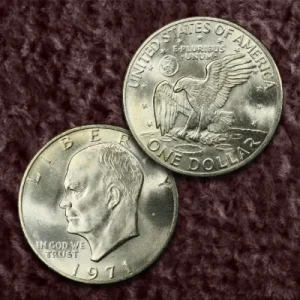
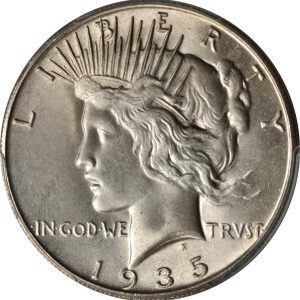
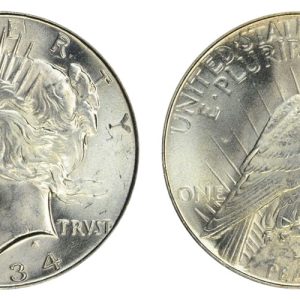
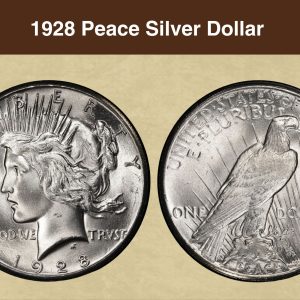
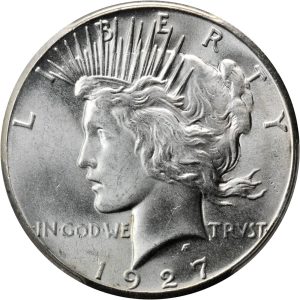
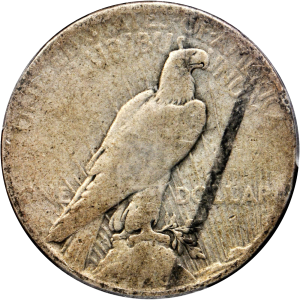
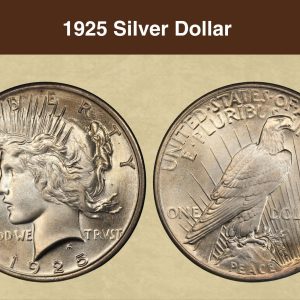
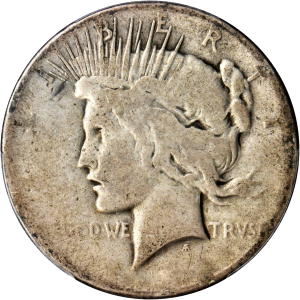
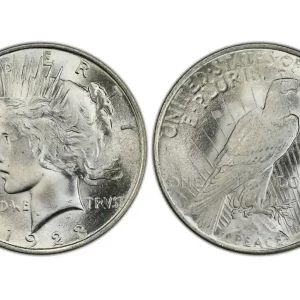
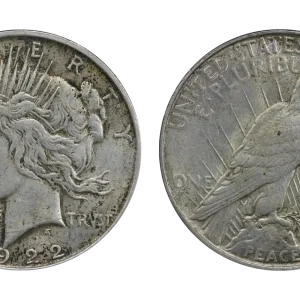
How much is a real 1804 silver dollar worth?
The value of a genuine 1804 silver dollar is extremely high, with the finest known example selling for over $7.68 million. However, it is far more likely that you have a counterfeit or replica, as there are more fakes than genuine coins, and these are typically worth only the value of their silver content or a few dollars. Authenticating a true 1804 dollar is a complex process due to numerous counterfeits and the coin’s history.
What makes the 1804 silver dollar rare?
1804 U.S. Silver Coin In fact, it is so famous and unique that at an auction, it was sold for almost $4 million. This is more than what any silver coin has ever been sold for in the entire world. The rarity of this coin can be judged by the fact that no other coin was minted back in 1804.
What are the 10 most valuable Morgan silver dollars?
1893-S Morgan Dollar: $3,000-$1,250,000. 1884-S Morgan Dollar: $34-$1,250,000. 1889-CC Morgan Dollar: $425-$1,200,000. 1895-O & 1895-S Morgan Dollar: $150-$700,000. 1895 Morgan Dollar: $32,500-$175,000. 1893-CC Morgan Dollar: $220-$142,500.
What does the edge of a 1804 silver dollar look like?
Thus, we find three classes of 1804 Silver Dollars. Class I examples were made circa 1834 – these all have lettered edges and no rust pit in the field just left of the top leaf of the olive branch on the reverse. Class II examples were made after 1857 – the only known specimen has a plain edge.